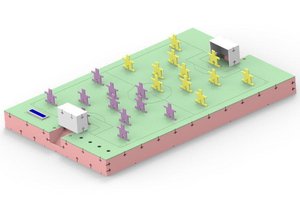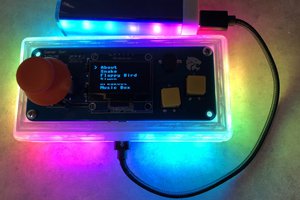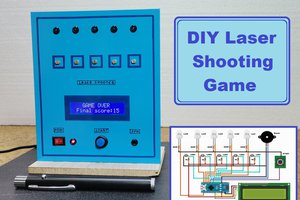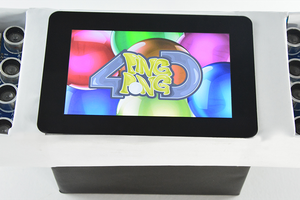Story
There are several old games in which they don't need a lot of complexity, and most of them were played with great intensity by people who had their childhood between the beginning and the end of the '90s.
One of these games is known as rock paper and scissors and uses only the hands of the participants. This game should be played in pairs, with each participant choosing three options: stone, paper, or scissors.
The stone is represented by the closed hand; the role is played by the participant's open hand, and the scissors are indicated by the separation between the index and middle fingers.
The game is developed as the participants interact with choosing one of the options, and according to the rules of the game, each option can lose or win the other.
This is a completely manual game, using only two more participants, however, there is a way to play rock paper and scissors using some electronic devices programmed by Arduino, and Figure 1 illustrates a didactic case developed for this purpose.
Figure 1 - Case of Pedra Papel e Tesoura game.
In the development of this didactic case it was using the Buzzer sound emitter, the LCD display, two indicative LEDs, and eight buttons, you will understand the structure developed.
The developed case was designed with the intention of supporting the Buzzer emitter, which will emit an audible signal according to the use of the keys by each player. In addition to the buzzer, we have an LCD display. He will be responsible for showing the score of the game. Finally, we have buttons that represent stone, paper, and scissors tools.
In this article, you will understand the assembly of the didactic case of the game, as well as know its mechanical structure, fixed by means of the nut bolt set, in its determined fittings.
Therefore, through this article you will learn:
- Know the structure of the didactic case using the Buzzer, the buttons, and the LCD display;
- Analyze the fixation of the mechanical structure of the case by means of screw, nut, and fittings.
- Understand the importance of each part of the case structure for the project as a whole.
- Understand the logic of operation of the Electronic Game Jokenpo.
Now, we will start the complete presentation of the Electronic Game Jokenpo development.
Project Development Methodology
This project consists of presenting a didactic model of a case for the stone-paper and scissors game using the LCD display, the Buzzer sound emitter, and some buttons and other components, as well as the assembly of its mechanical structure.
The project basically consists of the physical structure of the case to support the electronic components, which will process the signal to make the game work.
Figure 2 illustrates the internal region of the game case, as well as the screws responsible for fixing the lateral, front, rear, top, and bottom surfaces.
For the fixation of the structure, lateral supports were designed, with fittings dimensioned for M3 nuts and screws.
The support required for the LCD display uses 5 holes. Among them, 4 are used for the screws fixing the LCD itself and the last one will be necessary for your screen to be presented to users.
In addition to these holes, we have the holes for the buttons. They have a 12 mm diameter equally spaced, with 4 buttons for each participant.
Each button group will be at opposite ends of the designed case with a surface greater than the location of the buttons, thus ensuring that opponents do not see your opponent's option.
Figure 3 illustrates the holes for the participants' buttons.
Each participant will have 3 options, between stone, paper, or scissors, and the fourth button will be responsible for confirming the choice. Since the buttons are at opposite ends and covered by surfaces, each participant will not...
Read more »




 Brian Wagner
Brian Wagner
 mircemk
mircemk
 4D Makers
4D Makers